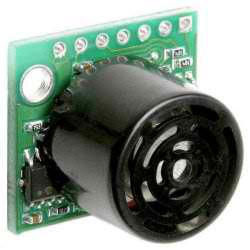Haven't posted on this project in a while, but there have been some developments.
I determined that the reason I wasn't seeing anything at all was because I had inadvertently grounded one of the output pins on the receiver. Whoops, I figured it would be something stupid like that.
However, that did not immediately solve my problems. Luckily, I was working in an electronics lab, where there was some handy equipment like an oscilloscope and an RF spectrum analyzer. Using the oscilloscope to monitor the receiver, it quickly became clear that there were some interesting timing issues to resolve. The receiver kept getting out of sync with the transmitter, which was characterized by a slowly rising voltage on the output pin. It took a half-cycle for the receiver to lock on to the transmitter's signal when it first starts, and if the transmitter was silent for longer than ~100ms, the receiver would lose its lock. This basically means I would have to work pretty hard to keep them in sync.
After that little experiment, I decided to look around for some alternative wireless modules that would do some of the lower-level signal processing for me, so I could focus on the main goal of the project. Craig Hickman told me he has successfully used the xbee modules in the past. These are relatively cheap ($19 each) modules which can both transmit and receive serial data.
Best of all, the xbees have a built-in ADC converter! This pretty much means all the hard work is done for me, and I don't need an Arduino in the transmitter at all! I can connect the analog output of the Ultrasonic sensor directly to the xbee module. This data will be transmitted serially to the receiving xbee module. The receiver will automatically convert that data to a PWM signal! I can then read the PWM signal on the Arduino. Since the receivers will be sending PWM instead of serial, it will be super easy to connect three of these to one Arduino, avoiding the problem of rigging up additional serial ports on the Arduino, or coordinating three transmitters sending to one receiver.
The only remaining question I have is: will I need to do some sort of conversion to step up the 3.3v pwm value from the xbee to the 5v arduino on the receiving end?

